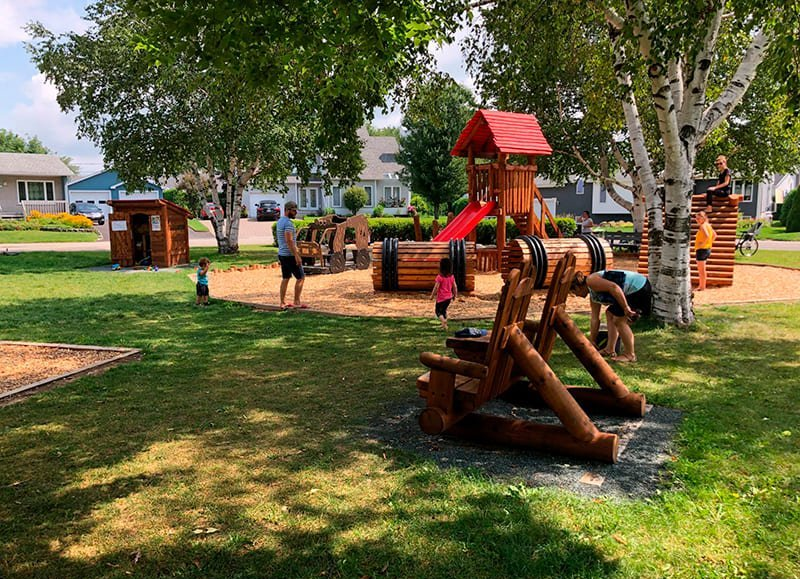Playgrounds are designed to encourage play, learning, and physical activity in children, so as they are the primary users, the safety and durability of the playgrounds must be guaranteed; therefore, it is vital to choose suitable materials according to their resistance and quality for their construction. There is a wide variety of materials with which playgrounds can be manufactured, and each has particular properties that make it a valid option. This article will explain a little about these materials and their properties.
Wood
Wood is one of the most popular materials for the construction of playgrounds since it is versatile and durable as long as quality wood is used with the appropriate physical properties in terms of hardness, strength, and flexibility for the manufacture of equipment; it is also necessary to make the pretreatment to prevent moisture, insects such as termites and others, affect them. Another advantage of wood is that it resists climatic adversities, such as rain, sun, cold, or heat; in addition to its beauty, it has excellent thermal conductivity and offers a warm and natural appearance, bringing children closer to nature. It is important to note that wood is a material widely used in natural playgrounds.
Metal
Metal playgrounds are made of metal pipes using electro-welding processes, making the pipes more resistant and avoiding bending and twisting. Another popular material is galvanized steel, which is used for the structure of playgrounds due to its rust resistance. This type of material is usually coated with electrostatic paint as it provides great advantages, both in terms of aesthetics and durability, since it has a hard finish that is more resistant than conventional paint.
Plastic
Regarding plastic materials, some playgrounds are made of heat-molded plastic with high strength and UV protection, which helps prevent wear and discoloration of the material due to prolonged exposure to the sun. Plastic playgrounds are very popular because they can be manufactured in multiple original designs, are water resistant, require minimal maintenance, and are easy to disinfect and clean.
Rubber
Other materials, such as protective surfaces, are used to manufacture playgrounds that are not necessarily playground equipment. Rubber is one of the most popular materials for these surfaces; whether poured in place or rubber tiles, they offer water resistance and provide a safe and comfortable surface for children.
Durability, Quality, and Maintenance
To ensure the durability of a playground, regardless of the material in which it is made, it is essential first to select top-quality materials since children are the ones who will use this equipment, and their safety cannot be put at risk. Therefore, it must be ensured that they do not quickly deteriorate, bend, split, or splinter; they must also withstand inclement weather. Additionally, it is necessary to perform preventive maintenance to maximize its useful life, including paint touch-ups, replacement of parts or others, either by deterioration due to the effect of time, vandalism, or simply natural wear and tear.
What do you think about this topic? Do you know another type of material for playground equipment?
If you want to know more about our products or services, you can contact us, by visiting the following link.
